Erotic Art in Medieval Europe
All works featured are from Martha Easton’s
“Was It Good For You, Too?” Medieval Erotic Art and Its Audience
(2008). There is a common misconception that medieval Christianity
refrained from sexual content and were prudish, but when looking through
the texts and literature, it is clear to see the medieval people’s
interest in sex (Easton, 2008). Easton examines the following images and
narrates why they could have been experienced as erotic (2008). As
devotion to Christ grew, images and writings of the beloved providing
orgasmic pleasure and penetrative sensations to his servants followed
(Easton, 2008).
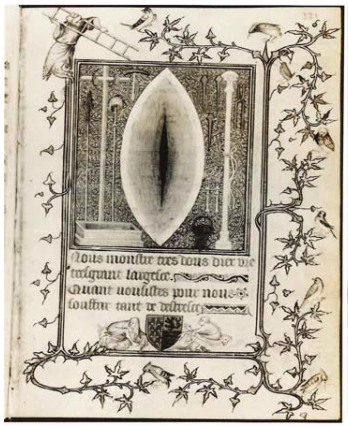
Wound of Christ. Psalter and prayer book of Bonne of Luxembourg
(p.5)
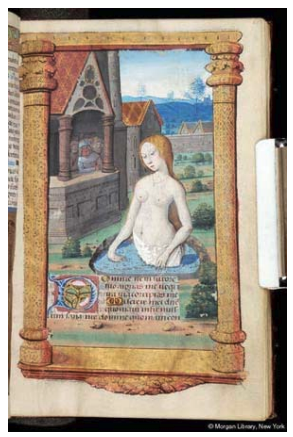
David and Bathsheba. c.1500. Book of Hours (p. 7)
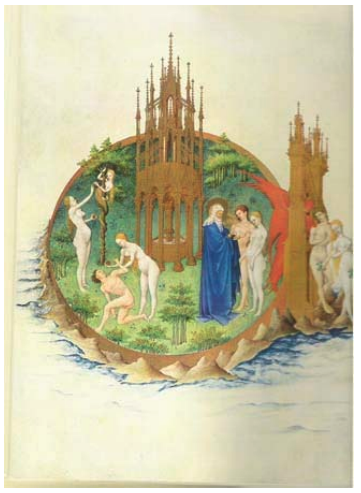
The Fall. The Tres Riches Heursof Jean, Duke of Berry (p. 8)
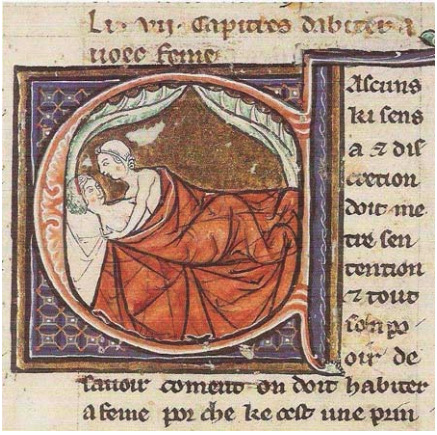
Couple in Bed. Le Regime de Corps. c. 1285. Though couple's bodies
are minimally shown, the curtains are drawn to suggest a vulva
(p.23)
The nakedness of women and the temptation motifs rose from the story of
the Fall of Adam and Eve (Easton, 2008). The pictures of breasts came to
represent “motherhood, femininity, and erotic longing” (Easton, 2008, p.
6). Images of bodies began to disappear after the 13th and 14th
centuries due to a desire to make social control of the body stricter
and more private (Easton, 2008). This even stretched as far as oral
readings became silent and public content made private which in turn led
to even more interest in erotic art and writing (Easton, 2008).
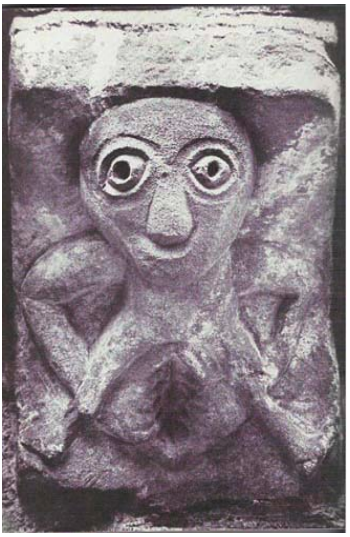
Sheela-na-gig. Kilpeck, Ireland. 14th century. Chaplets held by
women become a vaginal metaphor in the artwork (p. 19)
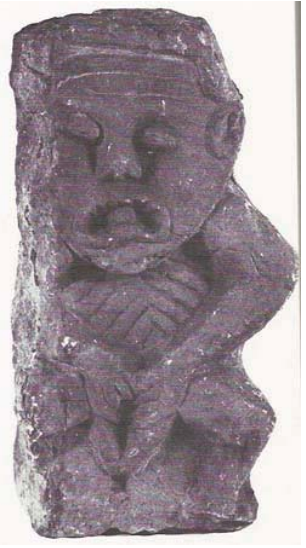
Sheela-na-gig. Dublin, Ireland. Dipiction of reproduction and birth
(p. 17)
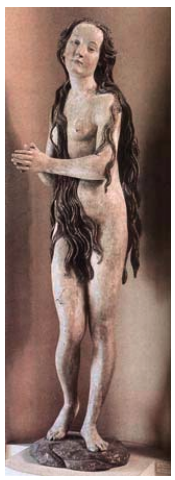
Mary Magdalene by Gregor Erhart. (p. 11)
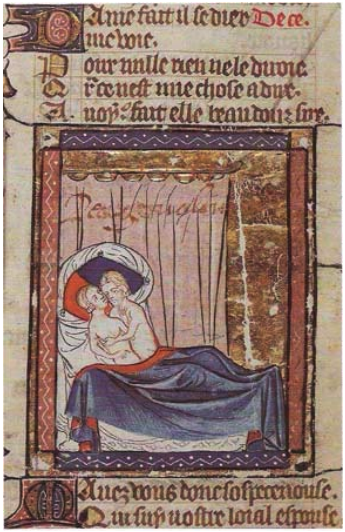
Couple in Bed. Roman de la Rose. c. 1380. Couple, eventhough
sexually engaged, are still depicted in a modest way (p. 25)







